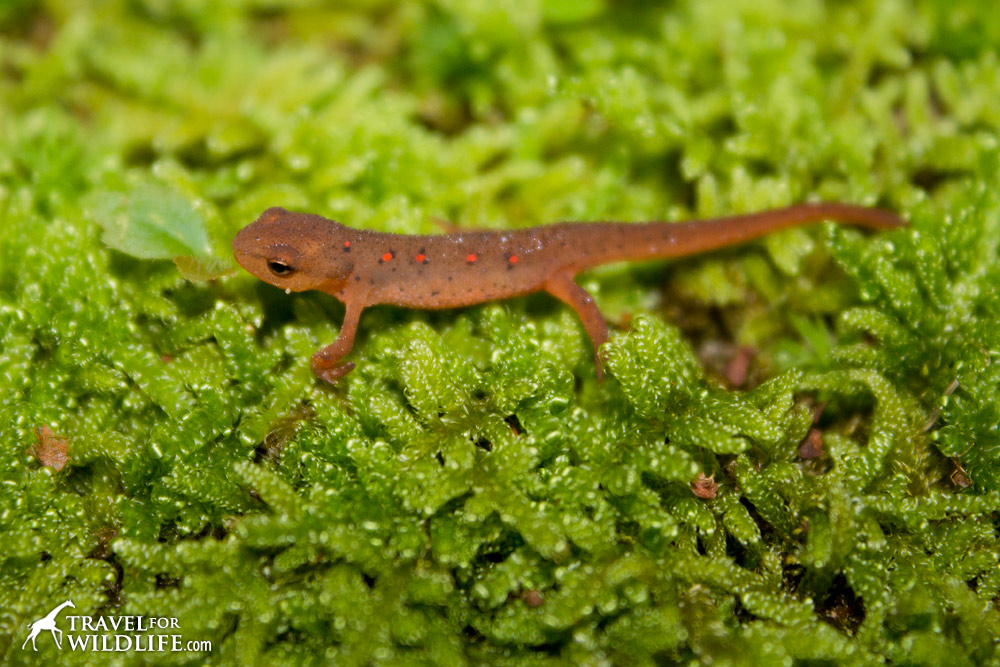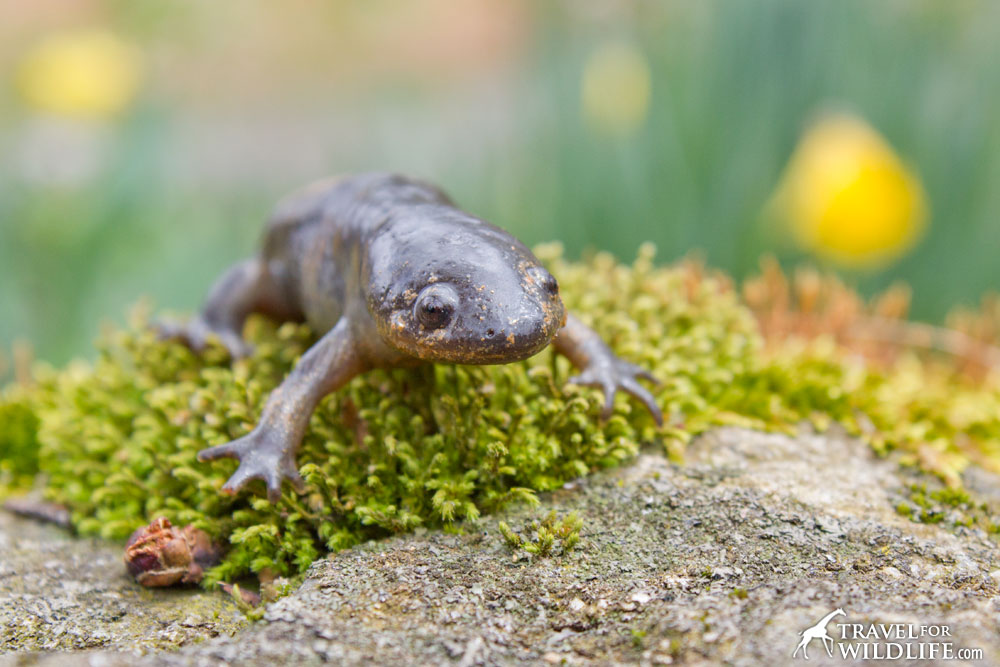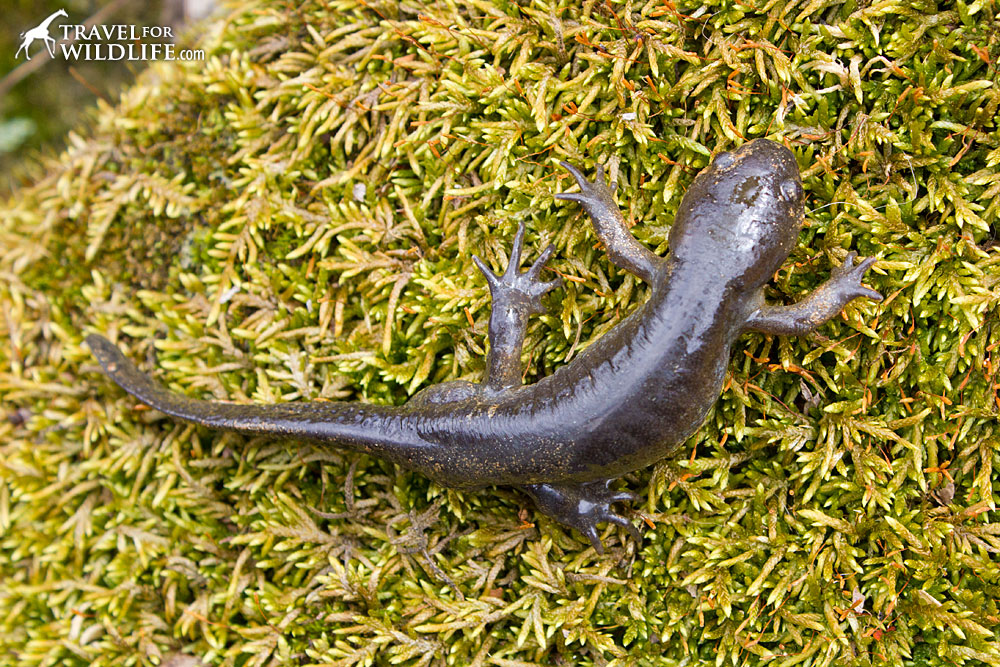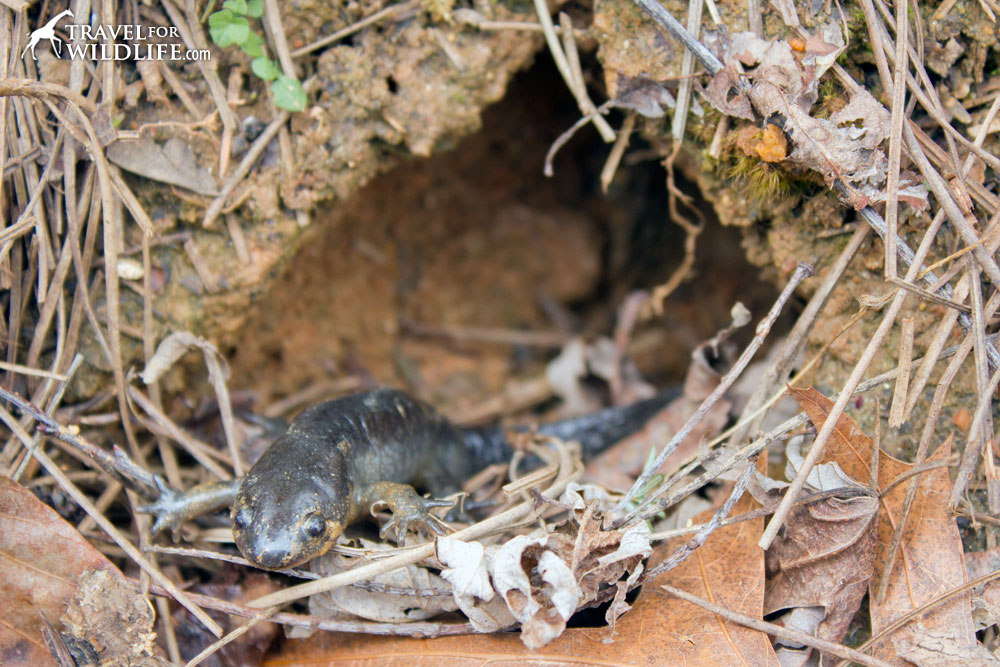Hal and I live only 45 minutes from the Smoky Mountains National Park in North Carolina. The Smoky Mountains are known as the “Salamander Capital of the World”, and a total of 30 species of salamanders can found in the park. From the huge Hellbender salamanders (reaching up to 29 inches!) to the brightly colored Black-chinned Red Salamander, our area is a constant coming and going of these incredible animals.

*This article may contain affiliate links. We receive a small commission at no extra cost to you.*
It is said that on any given day, the majority of vertebrate animals (including us, humans) in the park are salamanders! Even with such high numbers, Hal and I have only seen a handful of them around in all the five years that we’ve lived here. Sure, if you search for them you can see them all the time. But we kind of feel intrusive flipping logs and lifting rocks in creeks just to try to see one. We’d rather leave them alone and let those chance encounters be a magical moment. That’s what happened this morning in our own back yard!
Ever since we built our wildlife pond, we have witnessed a number of frogs visiting, breeding, and taking up residence. But we had no idea we would get salamanders! While doing some yard work Hal spotted a dark grey blob in a pile of loose dirt at the bottom of a trench. That grey blob was a Mole Salamander! I didn’t even know there were mole salamanders. We carefully picked it up to rescue it from the trench and to make sure it was ok.
Salamanders are found walking around in the forest during rainy nights as they make their way to water to breed. We are pretty sure this one was on its way to our pond as last night as we had a good amount of rain. Not all salamanders have the same needs, so we did some quick research on mole salamander biology and behavior while the little guy lounged in a plastic container with a bit of water in it to prevent his skin from drying.
Our little book Reptiles & Amphibians of the Smokies is great for identification, but it does not give much info on behavior and ecological needs. So we resorted to the good old internet. We found out that mole salamanders spend the day in small mammal burrows or under moss and they eat earthworms. Who knew, huh? They are usually found on the coastal plains and has a few inland spots where it can be found, up to 2,200 feet. We are at 2,150 feet, so we feel pretty lucky to have this guy!
We have tons of chipmunks tunnels in our yard so we chose one that hasn’t had much recent activity and was close to our pond. As soon as we put him in the burrow entrance, he decided it was home and headed in!
We hope to find salamander eggs in our pond real soon!

Cristina Garcia
Zoologist and wildlife photographer. She has worked in the field with jackals, wolves, cheetahs, & leopards. She serves on the Board of Directors of SEE Turtles, a non-profit sea turtle conservation organization.
Read her posts at Travel For Wildlife and see more of her work at Truly Wild, & Our Wild Yard.




Gaelyn
Saturday 28th of March 2015
Yet another advantage of building a great ecosystem, they will come. Very cool find for a not easy to spot species.
Cristina Garcia
Sunday 29th of March 2015
Exactly! And I wonder, how my other creatures are out there that we don't know of!
Simon Pierce
Saturday 28th of March 2015
Love :)
Cristina Garcia
Saturday 28th of March 2015
Aren't they cute! Can't wait to see if we get tiny salamanders in a few weeks!